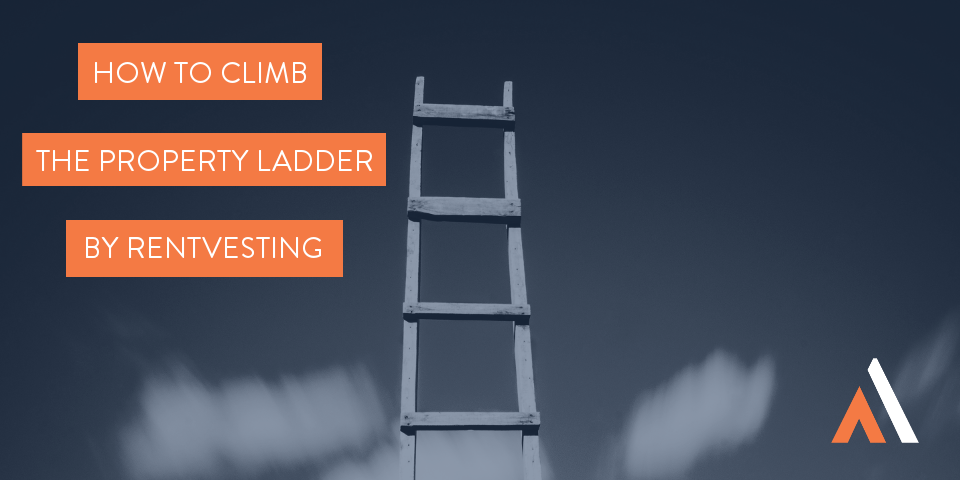
How to climb the property ladder by rentvesting
September 30, 2018 - Blog
Every once in a while a “new” strategy crops up in property circles that becomes the talk of the town.
Once upon a time, investing outside of your home state was considered “new”, whereas now it is a common part of a savvy property investment strategy.
The latest concept to gain traction is ‘rentvesting’, which simply means renting where you want to live and investing where you can afford to buy – although it is not technically new.
Rentvesting has been a successful strategy for sophisticated investors for a while already, because they understood that they didn’t have to compromise lifestyle to become a property owner or investor.
Clearly one of the reasons why rentvesting is more popular today is because of the strong property growth in Sydney and Melbourne over recent years.
With prices up significantly over the past five years, some people have simply given up on their dream of home ownership entirely.
Others, though, have recognised that Australia is a land of multiple markets that have more affordable property than their home cities.
How does rentvesting work?
One of the reasons why rentvesting is so popular is that it allows investors to make the most of the difference in the price of renting versus buying in the same location.
Take a suburb like Cremorne on Sydney’s Lower North Shore for example. The median rent for a two-bed unit is $680 per week, yet mortgage repayments would be around $1,000 per week for the same property. Renting and saving for a 20 per cent deposit, as well as all the other holding costs of owning a property is a stretch for many prospective property owners.
However, buying in a more affordable location such as Brisbane or Newcastle would require a smaller deposit, plus you get to make the most of the tax deductibility of the costs associated with investment property ownership.
Rentvesting also enables investors to benefit from market cycles in other locations, rather than buying into areas that may have already peaked.
That way, they can potentially enjoy capital growth sooner, which they can use to grow their portfolio, or even to purchase a home in a more desirable location.
Detractors of rentvesting as a viable strategy argue that rent money is dead money so why would anyone consider being a tenant for longer than they must?
The only way that thinking is correct is if someone remains a renter for the long-term and does nothing about improving their financial situation in the meantime.
The key to rentvesting success is to make your savings work harder for you by investing in more affordable locations.
Plus, you benefit from remaining in the location where you want to live – just without the hefty price tag of mortgage repayments.
A property strategy for everyone
Rentvesting has become a popular option for Sydney and Melbourne first-time property owners because of the ability to buy into more affordable markets.
However, it also works for upgraders, too.
Perhaps their family has outgrown their current home, so they need something bigger.
Of course, the problem is the high entry and exit costs of buying and selling property.
Say their home is valued at $1.2 million with a $600,000 mortgage, if they sold it to upgrade, they actually won’t end up with $600,000 in their bank account.
That’s because they are likely to be hit with about $120,000 in buying and selling costs, which cuts their nest egg down to $480,000.
Plus, they will need to spend more to upgrade to a larger home, which means their mortgage will potentially be about double what it was – and that will be a huge drain on their cash flow without question.
By adopting a rentvesting strategy, they could turn their current home into an investment property – thus transferring that non-tax-deductible debt into tax-deductible – and rent a larger home in the location of their choice.
Even if they continued to make principal and interest payments on their home loan, which is now an investment property, the cost of renting could be significantly lower than if they had bought in that location.
If that wasn’t enough of a windfall, they have retained all of the equity in their property, which they can use to invest in other locations.
They may even have enough equity to buy two affordable investment properties, which will supercharge their investment portfolio.
At some stage in the future, they may opt to buy a home in their preferred location, but because they have additional equity, the impact on their cash flow will be vastly reduced compared to what it would have been without rentvesting.
As you can see, rentvesting might be seen by some as a flash in the pan, but it is really a long-standing property investment strategy that can make a big difference to wealth creation as well as lifestyle.
If you are renting at the moment or have outgrown your existing home and considering your next move, STRAND Property Group can help you. As experienced independent property advisors, we have the industry knowledge and tools available to assist you to map out your property goals or help you buy a new property.
Contact us below to discuss developing a property strategy tailored specifically to your personal goals and let us help you climb the property ladder:


